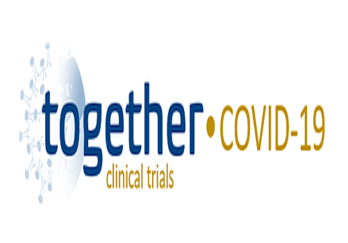Cytel has recently designed and implemented the TOGETHER Trials, funded by the Bill & Melinda Gates Foundation to generate knowledge to help fight COVID-19, particularly in low and middle-income countries. The trials, with sites in Brazil and South Africa, test three existing interventions as possible treatments for COVID-19 in high-risk adults who do not require hospitalization, compared to a placebo.
The TOGETHER trials use an adaptive platform design. This type of design is particularly useful for contexts such as COVID-19 response, where there are many unknowns and a need for accelerated and resource-efficient answers, for 5 reasons.
Reason #1: Flexible Learning
In traditional trials, all parameters are set in advance and fixed for the duration of the study, such as, sample size, allocation ratio of patients to trial arms, doses, treatment duration, etc. If, at the end of a trial, the therapy or therapies under study do not prove effective, we have only this and related findings to show for a long (and usually costly) effort.
By contrast, adaptive trials have the flexibility to move away from ineffective therapies or doses earlier, and look for more promising alternatives before the end of a trial (as long as the study endpoints can be measured and analyzed in time to adapt the trial design). At the onset, these parameters are pre-specified (prospectively planned) just as at any initial level, as are procedures for deciding when and how to run interim analyses of the data collected, and conditions under which these parameters will be changed. Adaptive designs therefore allow, for instance, doses to be changed, randomization to be adapted according to interim results, and appropriate identification and recruitment of patient population. Prospective planning helps ensure the unbiased results of these efficient designs.
Adaptive designs also allow for therapies that prove ineffective to be dropped from the trial, and for new arms to be added to the study as new candidate therapies emerge. This is appropriate and useful in many contexts of therapeutic development, but especially so in cases of emerging infections such as COVID-19, where so much is still unknown about the disease and new potential therapies will continue to emerge.
Reason #2: Data Pooling and Data Efficiency
Using master protocols, such as the one employed in the TOGETHER trials, several different trials can be run, in different places and times, producing data that can be pooled together for comparing different interventions to a common comparator or control arm, and amongst themselves. Combined analyses can accelerate and lower the costs of new drug development.
The Bill and Melinda Gates Foundation has published the protocol of the TOGETHER trials as a model for other trials, as will share de-identified data for further analysis.
Reason #3: Managing Small Sample Sizes
The efficiencies described in reasons #1 and #2—obtaining more information from collected data—means that an adaptive trial may require smaller sample sizes than a similar traditional trial. The flexibility to adapt sample size following interim analysis also allows sample sizes to be adapted as needed, avoiding underpowered trials.
Reason #4: Time and Resource Efficiency
The efficiencies described in reasons #1, #2 and #3-- obtaining more information from collected data and the flexibility to correct course towards the most promising paths—mean that ineffective arms get dropped, resources are put towards more promising arms, fewer patients need to be recruited into trials, and trial timelines shorten, essentially saving time and costs. Such efficiencies are especially important for finding treatments or preventive interventions for a pandemic such as COVID-19, where the measures necessary to halt transmission can have devastating economic and social impact, particularly in LMICS.
Reason #5: Equity and Patient Safety
The flexibility of adaptive trial design also helps decrease risks of participating in trials, significantly improving patient safety, by reducing participants’ risk of exposure to ineffective or harmful intervention. Participants who initially get assigned to the control group, or to an intervention that is later revealed to be inefficient, can be reassigned to another arm, where they can receive a more effective therapy. In adaptive trials that include a dose-finding component, patients can likewise be reassigned from ineffective or potentially unsafe doses to the doses found to be safe and effective. This also, to some degree, equalizes the prospects of trial participants, whereas under a traditional trial those assigned to the inferior arm at the outset would remain assigned to the inferior intervention throughout the study. The possibility of data pooling also allows comparisons of new candidate therapies to less effective interventions that have already been studied, or to a placebo arm, without the need to expose multiple groups of subjects to these inferior assignments.
Click the button to learn more.




